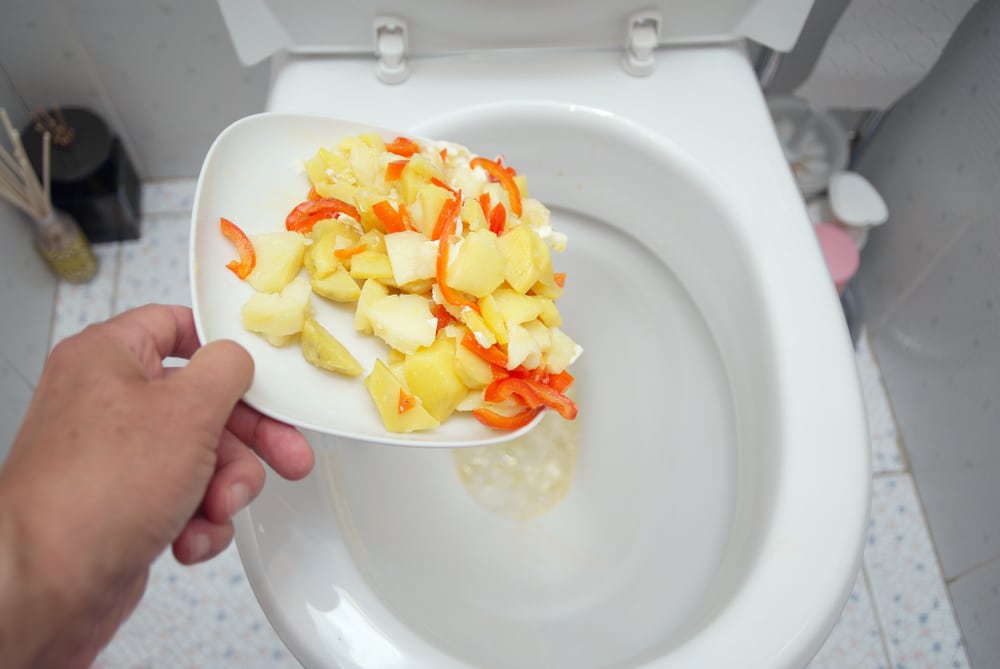Is it Sensible to Dispose of Food in the Toilet?
Is it Sensible to Dispose of Food in the Toilet?
Blog Article
Just about everyone maintains his or her own rationale in relation to Think Twice Before Flushing Food Down Your Toilet.

Introduction
Lots of people are commonly confronted with the issue of what to do with food waste, particularly when it comes to leftovers or scraps. One typical concern that arises is whether it's fine to purge food down the commode. In this short article, we'll look into the reasons why people may think about purging food, the effects of doing so, and alternative methods for correct disposal.
Reasons that individuals may take into consideration flushing food
Absence of recognition
Some people may not recognize the potential injury triggered by flushing food down the toilet. They might mistakenly believe that it's a safe practice.
Benefit
Flushing food down the toilet might appear like a quick and very easy service to throwing away unwanted scraps, specifically when there's no close-by garbage can offered.
Idleness
In some cases, people might simply select to flush food out of sheer negligence, without considering the effects of their activities.
Consequences of flushing food down the bathroom
Ecological impact
Food waste that winds up in rivers can contribute to pollution and injury water environments. Furthermore, the water utilized to flush food can stress water sources.
Pipes issues
Flushing food can result in blocked pipelines and drains pipes, creating pricey plumbing fixings and hassles.
Types of food that ought to not be flushed
Coarse foods
Foods with coarse appearances such as celery or corn husks can get entangled in pipelines and create blockages.
Starchy foods
Starchy foods like pasta and rice can take in water and swell, leading to clogs in pipelines.
Oils and fats
Greasy foods like bacon or cooking oils need to never ever be purged down the toilet as they can strengthen and create clogs.
Proper disposal approaches for food waste
Making use of a waste disposal unit
For homes outfitted with garbage disposals, food scraps can be ground up and flushed with the pipes system. However, not all foods are suitable for disposal in this way.
Recycling
Specific food packaging materials can be recycled, minimizing waste and lessening environmental influence.
Composting
Composting is an environmentally friendly method to take care of food waste. Organic products can be composted and made use of to enhance dirt for horticulture.
The relevance of correct waste monitoring
Reducing environmental damage
Correct waste monitoring methods, such as composting and recycling, aid reduce contamination and protect natural resources for future generations.
Securing plumbing systems
By avoiding the technique of flushing food down the bathroom, home owners can stop expensive pipes repair work and keep the stability of their plumbing systems.
Conclusion
In conclusion, while it might be appealing to purge food down the commode for comfort, it is very important to understand the prospective effects of this activity. By taking on proper waste monitoring techniques and disposing of food waste sensibly, people can add to much healthier pipes systems and a cleaner atmosphere for all.
FLUSH FOOD DOWN THE TOILET?
FLUSHING FOOD CAN CAUSE BLOCKED DRAINS IN YOUR HOME
All of the plumbing fixtures in your home are connected to the same sewer pipe outside of your home. This outdoor sewer pipe is responsible for transporting all the wastewater from your home to the Council sewer mains. Even small pieces of food that go down the kitchen sink can cause problems for your sewer. It should therefore be obvious that flushing larger bits of food, such as meat, risks a clog in either the toilet itself or the sewer pipes. Flushing greasy food is even more problematic because oil coagulates when it cools, coating the interior lining of your pipes.
THE TOILET IS NOT A BIN
Food isn’t the only thing that people shouldn’t be flushing down the toilet. People use the toilet to dispose of all kinds of things such as tampons, makeup wipes, dental floss, kitty litter and even underwear. Water goes to great lengths to educate residents about the high costs and stress placed on wastewater treatment systems simply from people flushing the wrong stuff down the toilet. It costs taxpayers millions of dollars each year, and homeowners thousands in blocked drain repairs.
FLUSHING FOOD IS A WASTE OF WATER
Flushing food is a waste of our most precious resource - water. In June this year Level 1 water restrictions were introduced to protect water supply from drought conditions. Much of New South Wales continues to be affected by prolonged drought with recent figures revealing up to 97 per cent of the state remains in drought. Depending on whether you have a single or dual flush toilet, every single flush uses between five and 11 litres of water. In the current climate this is a huge amount of water to be wasting on flushing food that should be placed in the bin (or better yet, the compost).
https://www.jabplumbingsolutions.com.au/blog/can-you-flush-food-down-the-toilet

I recently found that review on Flushing Food Down the Toilet? while perusing the search engines. Those who appreciated our article plz be sure to pass it around. I value your readership.
Go Services Report this page